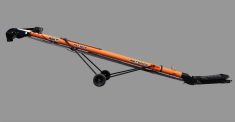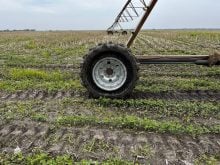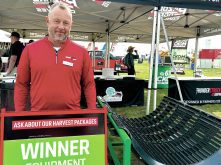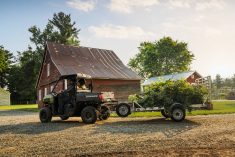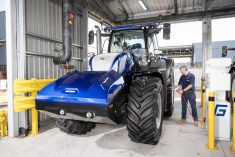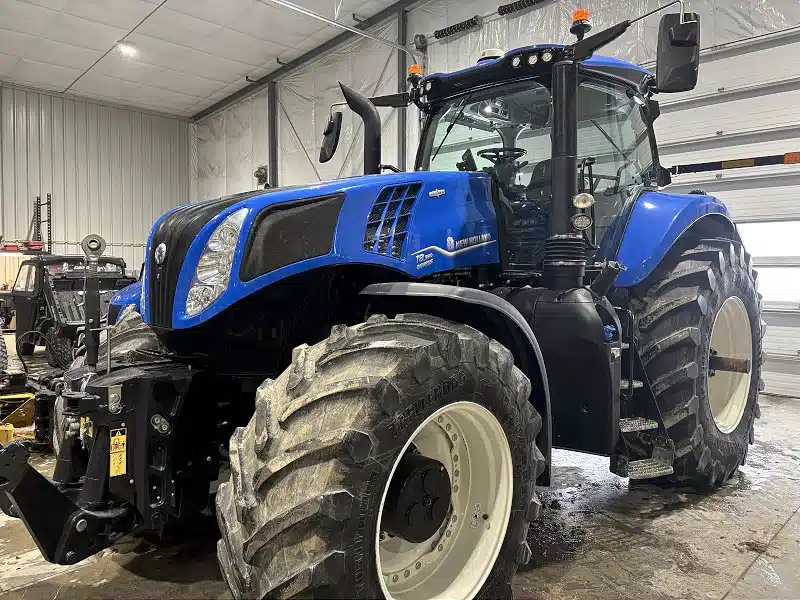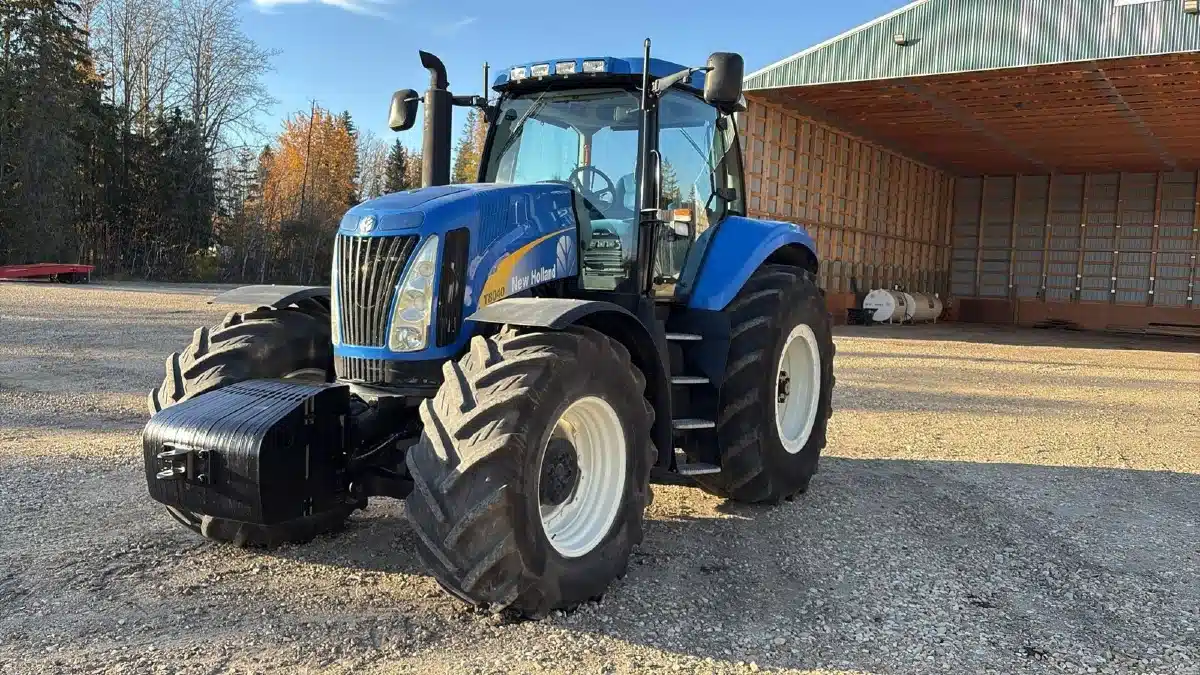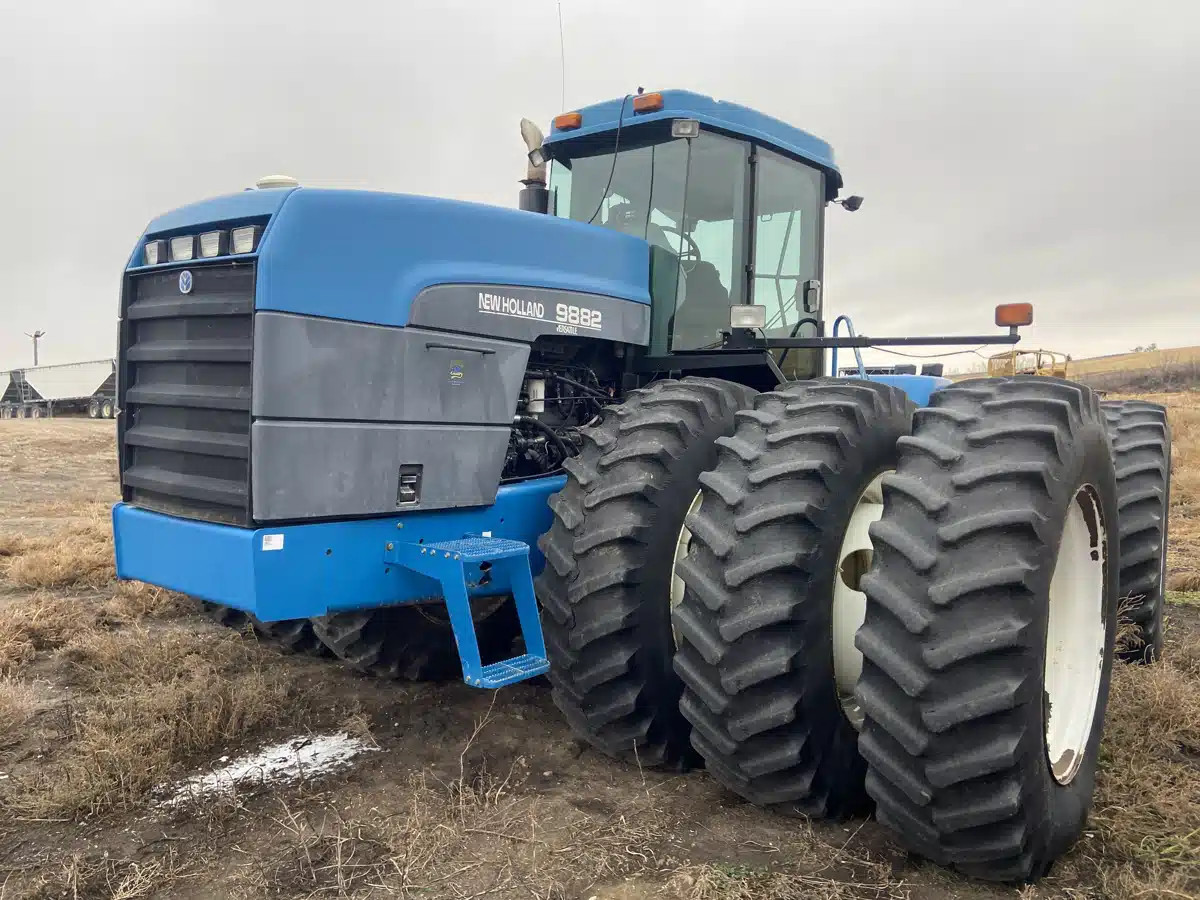The introduction of the AF11 twin-rotor Case IH combine in February may have been a bit of a shock to longtime enthusiasts of the red brand. The twin-rotor concept had been a strictly New Holland design feature until then.
Combine design has been one of the major differences when it comes to machines offered by the two sister brands Case IH and New Holland under CNH Industrial ownership—until now, that is.
While it isn’t really clear yet just how similar the features of the new Case IH AF11 and the New Holland CR 11 combine — which was introduced at Agritechnica in Germany — are, the trend toward more design integration between equipment offered by the two sister brands has become noticeable.
Read Also

Claas brings 1000 Series SP forage harvesters to Canada
In mid-August, Claas unveiled its new line of Jaguar forage harvesters at an event in Visalia, California, deep in the heart of that state’s dairy region.
“I think four years ago when COVID hit, it taught a lot of manufacturers a lot of different things,” said Ken Paul, product marketing manager for high-horsepower tractors at New Holland.
“For us it was how can we streamline our manufacturing process, make it easier to produce quality equipment and get it out to customers faster than what we’ve done before. I think that’s what it’s really boiled down to.”
At the recent Commodity Classic farm show in Houston in February, Case IH introduced an updated line of high-horsepower Magnum tractors. Not far away was the sister line of updated blue Genesis T8 with PLM Intelligence tractors, making its debut — and introducing similar new features.
“Between Case and ourselves,” Paul adds, “it is a straight carryover as far as what we’re both introducing for model year ’25. There’s really no differences, per se.”
Both the Case IH Magnums and New Holland T8 tractors are built at the same Racine, Wisconsin assembly plant.
“You could see a blue one come down the line and right behind it a red one,” said Paul.
The T8 tractors will get a bump in horsepower across the line as they adopt new engine technology to meet the more strict Tier 4B North American and Stage V European emissions limits.
“For model year ’25 on the T8s is we’re moving to Tier 4B/Stage V emissions standards,” Paul says. “All our high-horsepower models are now at that Stage V. What comes along with that is a change in our rated horsepower curve, so we’re picking up approximately five per cent more rated horsepower than what we had before, about 15 horsepower, which really shines in that tillage, draft-type application.”
The tractors will still use an SCR exhaust after-treatment system like they do currently, but it will be more efficient in limiting nitrogen oxides.
“There’s no change in the after-treatment system,” he says. “Stage V filters out more of the NOx than regular Tier 4B emissions did.”
The engine update also meets one of the most common customer demands brands are seeing recently: the desire to have more horsepower packed into a tractor.
“It may not be a consistent theme (with all buyers),” Paul says. “But it’s definitely in the top five (customer requests). Customers want to go faster with implements. That requires additional horsepower.”
At the rear, the new Genesis T8 models get the same hydraulic remotes update their Magnum cousins do, using the newer design introduced on the four-wheel drives.
“It’s a very similar setup to what we introduced on the T9 maybe a year or so ago,” Paul says. “We’re going to bring that over to the T8. It really kind of increases the reliability and quality versus the old remotes system we had. This new coupler system has an assisted ejection lever. It just makes it easier to connect or disconnect from the remotes under pressure. It’s a lot easier than what we had before.”
As for digital technology, the brand will continue with its existing tech platform for 2025.
“We haven’t done an update on the technology end of it now for a year or two,” Paul says. “That was our last big change for integrated technology, precision capability, a new display, new armrest. Five-year telematics (subscription) is standard. Our Cygnus receiver is in standard, base equipment. As our customers look to be more efficient, it just makes sense to not have that technology as an add-on anymore.”
Orders for the new Genesis T8 with PLM Intelligence tractors will likely open in mid-year, with production beginning in the last quarter of 2024.




